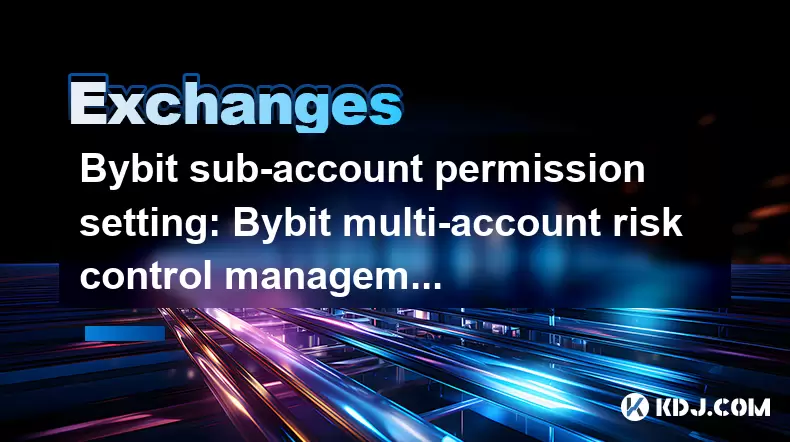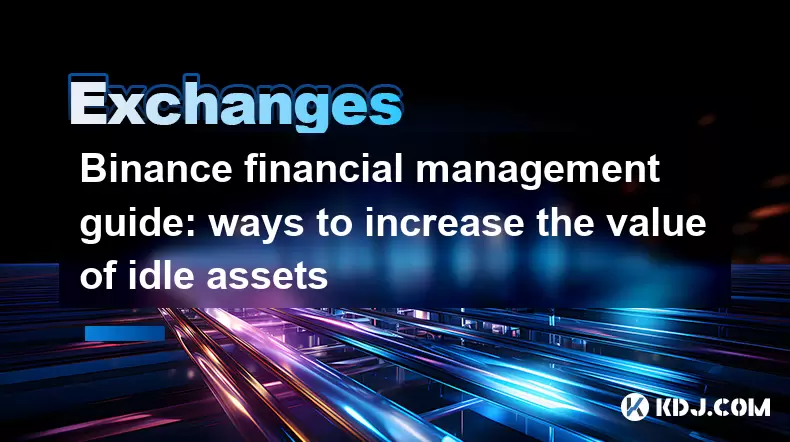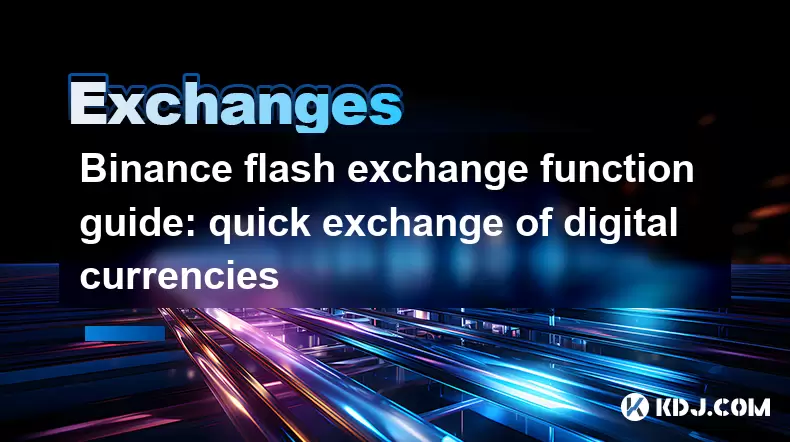-
 Bitcoin
Bitcoin $102,936.6333
3.84% -
 Ethereum
Ethereum $2,303.2860
5.42% -
 Tether USDt
Tether USDt $1.0008
0.05% -
 XRP
XRP $2.0592
5.18% -
 BNB
BNB $630.3035
4.07% -
 Solana
Solana $139.0485
7.91% -
 USDC
USDC $1.0000
0.01% -
 TRON
TRON $0.2722
3.17% -
 Dogecoin
Dogecoin $0.1572
6.30% -
 Cardano
Cardano $0.5543
5.37% -
 Hyperliquid
Hyperliquid $37.0789
8.94% -
 Bitcoin Cash
Bitcoin Cash $454.8827
2.38% -
 Sui
Sui $2.6088
10.94% -
 UNUS SED LEO
UNUS SED LEO $9.0751
0.81% -
 Chainlink
Chainlink $12.1078
6.95% -
 Stellar
Stellar $0.2351
5.76% -
 Avalanche
Avalanche $17.1771
7.35% -
 Toncoin
Toncoin $2.8438
5.50% -
 Shiba Inu
Shiba Inu $0.0...01112
7.74% -
 Litecoin
Litecoin $82.9385
5.91% -
 Hedera
Hedera $0.1409
8.82% -
 Ethena USDe
Ethena USDe $1.0006
0.01% -
 Monero
Monero $301.2470
1.77% -
 Dai
Dai $1.0001
0.01% -
 Polkadot
Polkadot $3.2751
3.88% -
 Bitget Token
Bitget Token $4.0623
2.00% -
 Uniswap
Uniswap $6.5652
8.27% -
 Pepe
Pepe $0.0...09287
7.77% -
 Pi
Pi $0.5146
6.32% -
 Aave
Aave $242.0173
11.35%
Bybit sub-account permission setting: Bybit multi-account risk control management
Bybit's sub-accounts allow traders to manage multiple accounts with customizable permissions for trading, withdrawals, and API access, enhancing risk control and strategy segregation.
Jun 15, 2025 at 10:56 pm

Bybit, one of the leading cryptocurrency exchanges, offers a robust feature known as sub-accounts that allows users to manage multiple trading accounts under a single master account. This feature is particularly useful for traders who want to segregate their trading strategies, manage different portfolios, or delegate trading responsibilities. In this article, we will delve into the specifics of Bybit sub-account permission setting and how it aids in multi-account risk control management.
Understanding Bybit Sub-Accounts
Bybit sub-accounts enable users to create and manage multiple trading accounts from one master account. Each sub-account functions independently, with its own balance, trading history, and API keys. This setup is beneficial for traders who wish to keep their trading activities organized and separate, such as running different trading strategies or managing funds for different purposes.
To create a sub-account, users need to navigate to the sub-account section in their Bybit account settings. Here, they can add new sub-accounts and set specific permissions for each one. The permissions include trading, withdrawal, and API access, which are crucial for managing risk effectively.
Setting Permissions for Sub-Accounts
Setting the right permissions for each sub-account is vital for risk management. Bybit allows users to customize permissions based on their needs, ensuring that each sub-account operates within the defined limits.
- Trading Permissions: Users can enable or disable trading for each sub-account. This is useful if you want to restrict trading on certain accounts to prevent unauthorized trades.
- Withdrawal Permissions: Bybit allows users to control withdrawal rights. You can enable or disable withdrawals for each sub-account, ensuring that funds are secure and can only be moved with your approval.
- API Permissions: API access can be granted or restricted for each sub-account. This is crucial for those who use trading bots or third-party applications, as it allows you to manage which sub-accounts can be accessed programmatically.
To set permissions, follow these steps:
- Log into your Bybit account and go to the sub-account section.
- Select the sub-account you want to modify.
- Adjust the trading, withdrawal, and API permissions as needed.
- Save the changes to apply the new settings.
Risk Control Management with Sub-Accounts
Effective risk control is essential for successful trading, and Bybit's sub-account feature plays a significant role in this aspect. By segregating your trading activities into different sub-accounts, you can manage risk more efficiently.
- Portfolio Diversification: You can allocate different assets or trading strategies to different sub-accounts, reducing the risk of significant losses from a single strategy or asset.
- Risk Limitation: By setting specific trading permissions and withdrawal limits for each sub-account, you can limit the potential risk associated with each account.
- Monitoring and Control: With separate trading histories and balances for each sub-account, you can monitor the performance of each account closely and make adjustments as needed.
Advanced Features for Enhanced Risk Management
Bybit offers additional features that enhance the risk management capabilities of sub-accounts. These include:
- Position Limits: You can set position limits for each sub-account to control the maximum exposure allowed. This helps in managing the risk associated with large positions.
- Margin Settings: Adjusting margin settings for each sub-account allows you to control the leverage used, which is crucial for managing the risk of margin trading.
- API Key Management: By managing API keys for each sub-account, you can ensure that only authorized applications can access your trading data and execute trades.
To utilize these advanced features, follow these steps:
- Navigate to the sub-account section in your Bybit account settings.
- Select the sub-account you want to configure.
- Adjust the position limits, margin settings, and API key permissions as required.
- Save the changes to apply the new settings.
Practical Applications of Sub-Accounts
Sub-accounts can be used in various practical scenarios to enhance trading and risk management. Here are some examples:
- Strategy Segregation: Traders can use different sub-accounts to implement and test various trading strategies. For instance, one sub-account can be used for high-frequency trading, while another is dedicated to long-term investments.
- Fund Management: Users can allocate funds to different sub-accounts for different purposes, such as personal trading, managing client funds, or running a trading bot.
- Team Collaboration: In a trading team, sub-accounts can be used to assign different roles and responsibilities. Each team member can have access to specific sub-accounts with defined permissions, ensuring efficient collaboration and risk management.
Security Considerations for Sub-Accounts
While sub-accounts offer numerous benefits, it's essential to consider the security aspects to protect your funds and trading activities.
- Two-Factor Authentication (2FA): Enable 2FA for both your master account and sub-accounts to add an extra layer of security.
- Secure API Keys: Manage API keys carefully, ensuring that only trusted applications have access to your sub-accounts. Regularly review and revoke unnecessary keys.
- Withdrawal Whitelist: Use the withdrawal whitelist feature to limit withdrawals to specific addresses, reducing the risk of unauthorized transfers.
To enhance the security of your sub-accounts, follow these steps:
- Go to the security settings in your Bybit account.
- Enable 2FA for your master account and sub-accounts.
- Manage and review API keys regularly.
- Set up a withdrawal whitelist for each sub-account.
Frequently Asked Questions
Q1: Can I transfer funds between my Bybit sub-accounts?
Yes, Bybit allows you to transfer funds between sub-accounts. You can do this by navigating to the sub-account section, selecting the source and destination accounts, and specifying the amount to transfer.
Q2: How many sub-accounts can I create on Bybit?
Bybit allows users to create up to 20 sub-accounts per master account. This number may vary based on Bybit's policies and your account level.
Q3: Can I set different leverage levels for each sub-account?
Yes, you can set different leverage levels for each sub-account. This can be done by adjusting the margin settings for each sub-account in the sub-account section of your Bybit account settings.
Q4: Is it possible to change the permissions of a sub-account after it has been created?
Yes, you can change the permissions of a sub-account at any time. Simply go to the sub-account section, select the sub-account, and modify the trading, withdrawal, and API permissions as needed.
Disclaimer:info@kdj.com
The information provided is not trading advice. kdj.com does not assume any responsibility for any investments made based on the information provided in this article. Cryptocurrencies are highly volatile and it is highly recommended that you invest with caution after thorough research!
If you believe that the content used on this website infringes your copyright, please contact us immediately (info@kdj.com) and we will delete it promptly.
- Crypto Penny Coins: Hunting for Monster Gains in 2025
- 2025-06-24 02:45:12
- Ethereum Whale Dips Into Crashing ETH: Smart Move?
- 2025-06-24 02:25:12
- Shiba Inu vs. Rival Tokens: Navigating the Cryptocurrency Craze in NYC
- 2025-06-24 03:10:22
- Stablecoin Scramble: Market Structure and Bill Passage in the Crypto Wild West
- 2025-06-24 02:45:12
- Circle Stock Soars: Surpassing USDC Market Cap After GENIUS Act Boost
- 2025-06-24 03:10:22
- Pepe Coin's Open Interest Hints at Potential Rally: A Trader's Guide
- 2025-06-24 02:50:12
Related knowledge

Binance spot market analysis: seize the best time to buy and sell
Jun 19,2025 at 04:56pm
Understanding the Binance Spot MarketThe Binance spot market is one of the most popular platforms for cryptocurrency trading globally. It allows users to trade digital assets at current market prices, making it essential for traders aiming to buy low and sell high. Unlike futures or margin trading, spot trading involves direct ownership of the asset aft...

Binance fund management secrets: reasonable allocation to increase income
Jun 22,2025 at 02:29pm
Understanding Binance Fund ManagementBinance fund management involves strategic allocation of your cryptocurrency assets to optimize returns while managing risk. The key to successful fund management lies in understanding how different investment options on the Binance platform can be utilized to create a diversified portfolio. This includes spot tradin...

Binance trading pair selection skills: find the best buying and selling combination
Jun 23,2025 at 02:49am
Understanding the Basics of Trading Pairs on BinanceBefore diving into trading pair selection skills, it's essential to understand what a trading pair is. On Binance, a trading pair refers to two cryptocurrencies that can be traded against each other. For example, BTC/USDT means Bitcoin is being traded against Tether. Each trading pair has its own liqui...

Binance new coin mining strategy: participate in Launchpool to earn income
Jun 23,2025 at 11:56am
What is Binance Launchpool and how does it work?Binance Launchpool is a feature introduced by the world’s largest cryptocurrency exchange, Binance, to allow users to earn new tokens through staking. This platform enables users to stake their existing cryptocurrencies (such as BNB, BUSD, or other supported assets) in exchange for newly launched tokens. T...

Binance financial management guide: ways to increase the value of idle assets
Jun 19,2025 at 11:22pm
Understanding Idle Assets in the Cryptocurrency SpaceIn the fast-paced world of cryptocurrency, idle assets refer to digital currencies that are not actively being used for trading, staking, or yield farming. Holding these funds in a wallet without utilizing them means missing out on potential growth opportunities. Binance, as one of the leading platfor...

Binance flash exchange function guide: quick exchange of digital currencies
Jun 23,2025 at 12:29pm
What is the Binance Flash Exchange Function?The Binance Flash Exchange function is a powerful tool designed to allow users to instantly swap between supported cryptocurrencies without the need for placing traditional buy/sell orders. This feature simplifies the trading process by offering a direct exchange mechanism, eliminating the requirement to conve...

Binance spot market analysis: seize the best time to buy and sell
Jun 19,2025 at 04:56pm
Understanding the Binance Spot MarketThe Binance spot market is one of the most popular platforms for cryptocurrency trading globally. It allows users to trade digital assets at current market prices, making it essential for traders aiming to buy low and sell high. Unlike futures or margin trading, spot trading involves direct ownership of the asset aft...

Binance fund management secrets: reasonable allocation to increase income
Jun 22,2025 at 02:29pm
Understanding Binance Fund ManagementBinance fund management involves strategic allocation of your cryptocurrency assets to optimize returns while managing risk. The key to successful fund management lies in understanding how different investment options on the Binance platform can be utilized to create a diversified portfolio. This includes spot tradin...

Binance trading pair selection skills: find the best buying and selling combination
Jun 23,2025 at 02:49am
Understanding the Basics of Trading Pairs on BinanceBefore diving into trading pair selection skills, it's essential to understand what a trading pair is. On Binance, a trading pair refers to two cryptocurrencies that can be traded against each other. For example, BTC/USDT means Bitcoin is being traded against Tether. Each trading pair has its own liqui...

Binance new coin mining strategy: participate in Launchpool to earn income
Jun 23,2025 at 11:56am
What is Binance Launchpool and how does it work?Binance Launchpool is a feature introduced by the world’s largest cryptocurrency exchange, Binance, to allow users to earn new tokens through staking. This platform enables users to stake their existing cryptocurrencies (such as BNB, BUSD, or other supported assets) in exchange for newly launched tokens. T...

Binance financial management guide: ways to increase the value of idle assets
Jun 19,2025 at 11:22pm
Understanding Idle Assets in the Cryptocurrency SpaceIn the fast-paced world of cryptocurrency, idle assets refer to digital currencies that are not actively being used for trading, staking, or yield farming. Holding these funds in a wallet without utilizing them means missing out on potential growth opportunities. Binance, as one of the leading platfor...

Binance flash exchange function guide: quick exchange of digital currencies
Jun 23,2025 at 12:29pm
What is the Binance Flash Exchange Function?The Binance Flash Exchange function is a powerful tool designed to allow users to instantly swap between supported cryptocurrencies without the need for placing traditional buy/sell orders. This feature simplifies the trading process by offering a direct exchange mechanism, eliminating the requirement to conve...
See all articles
























































































